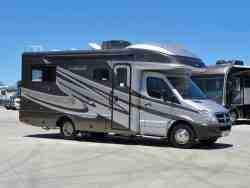Reese Hitches: Can They Save Us Dollars When It's Time To Pull Stuff?
- Aluminum Trailer Stabilizer Jack
- Custom designed Bolt On Receiver Style Trailer Hitches
- Adjustable Trunnion style weight distributing systems
- Dual Cam Sway Controls
- Class IV Trailer Hitches
- "Install it yourself" multi-fit trailer hitches
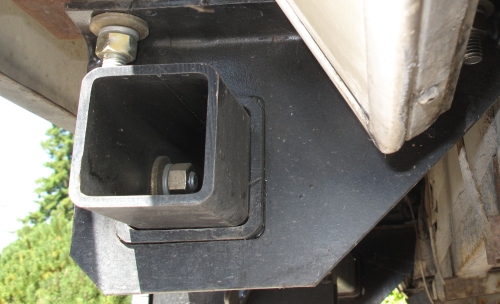
A simple bolt on design makes installation a snap! Our Reese Hitch Installation Story
I installed a Reese Hitch on my Class C Motorhome in April 2006. It was a simple matter really, however, there is a story involved...
When we bought our Class C Motorhome, we soon realized that we would achieve our best fuel economy if the rig was parked. Therefore, pulling a car seemed to be a good idea. Unfortunately, we did not have a hitch on this motorhome.
At this time, I was still on the learning curve with this RV lifestyle thing. So, I went looking for someone to install a hitch for my unit. The result was not pretty.
Most professional installation services like U-Haul wouldn't touch it for liability reasons. They had a policy of not installing RV tow bars to the extended frame on the Class C Motorhome chassis.I did find a custom welding shop that would do the job for around a 1,000 bucks. I'm thinking that they specialized in the installation Blue Ox towbars. This was not looking good. 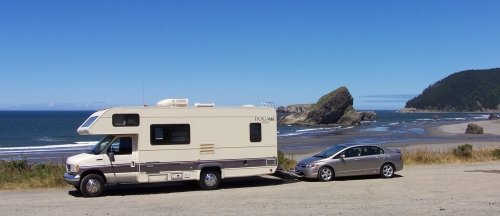
Another beautiful Northern California Beach!
I decided I should be able to do this myself. I really didn't understand the big deal. So, I started searching the internet, and I came across the Reese Hitches website. They had a sweet deal on a bolt on hitch that they were willing to sell to me for less than $200.00.
I liked this idea because I'm not a big fan of welding on a frame. When you start heating an RV frame with a welder, it can change the characteristics of the metal... and it could weaken the thing!
So drilling a few holes seemed like a much better plan. I installed this hitch, and I pull our 2006 Honda Civic. It weighs in at around 2600 lbs with a tongue weight of less than 100 lbs. This keeps me well below the GCWR for this Class C Motorhome I've pulled this car well over 3,000 miles and things are looking good.
Reese has a very easy website to navigate with tons of useful information like towing terms, explanations of the different types and classification of receivers (hitches), product selection tools, etc. In fact, this turned out to be one of the less intensive projects that I have perfomed on this rig! This project only took a couple of hours to complete! Custom Search
Custom Search
and high quality standards
Reese Hitches was founded in 1952. This company has a reputation of innovation and high quality standards. It is considered to be the premier manufacturer of hitching systems in North America.
base in this great nation.

They currently employ over 800 people and use state of the art manufacturing processes such as Computer Aided Design (CAD), fatigue testing and finite element analysis on each product line. The mission at Reese Hitches is to "Build the most valued, reliable, durable and easy to install products in the marketplace".
1968 was the year that Reese was recognized by the RV Industry, and was asked to develop tests that lead to an industry standard called V5 and SAEJ684. Some of the early revolutionary and innovative RV tow bars introduced to the towing market by Reese included:
Return To Top Of Page
Leave What Are The Benefits That Reese_Hitches Give Us When It Is Time To Pull Stuff? And Return To Aftermarket Class C Motorhome Accessories Can Improve Your Rig's Performance!
Leave What Are The Benefits That Reese Hitches Give Us When It Is Time To Pull Stuff? And Return To The Class C Motorhome: How To Achieve The Maximum RV Lifestyle!
Your Stories
Onan AC Generator Wouldn't Start
1995 Tioga Montara Had a Leak - Ouch!
A Simple Way To Put An Elecrtrical Thermostat On A Small Space Heater In A Truck Camper!
A Great Destinaton, With An Unexpected Outcome!
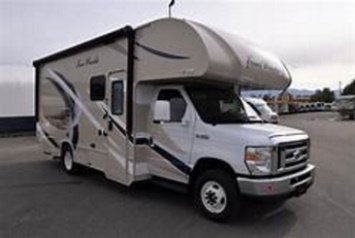
2018 Thor 21F Four Winds Class C Motorhome
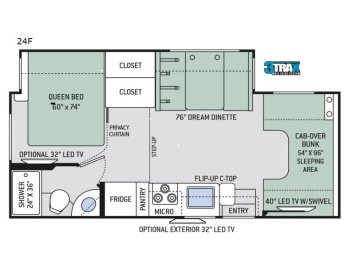
2018 Thor 21F Four Winds Class C Motorhome
2010 Fleetwood Pulse 24D
Class C Motorhome
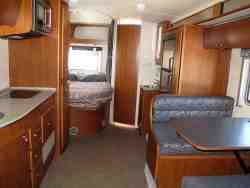
2010 Fleetwood Pulse 24D
Class C Motorhome
Above Graphics Courtesy of:
http://www.DeMartini.com
| Gasoline Prices |






